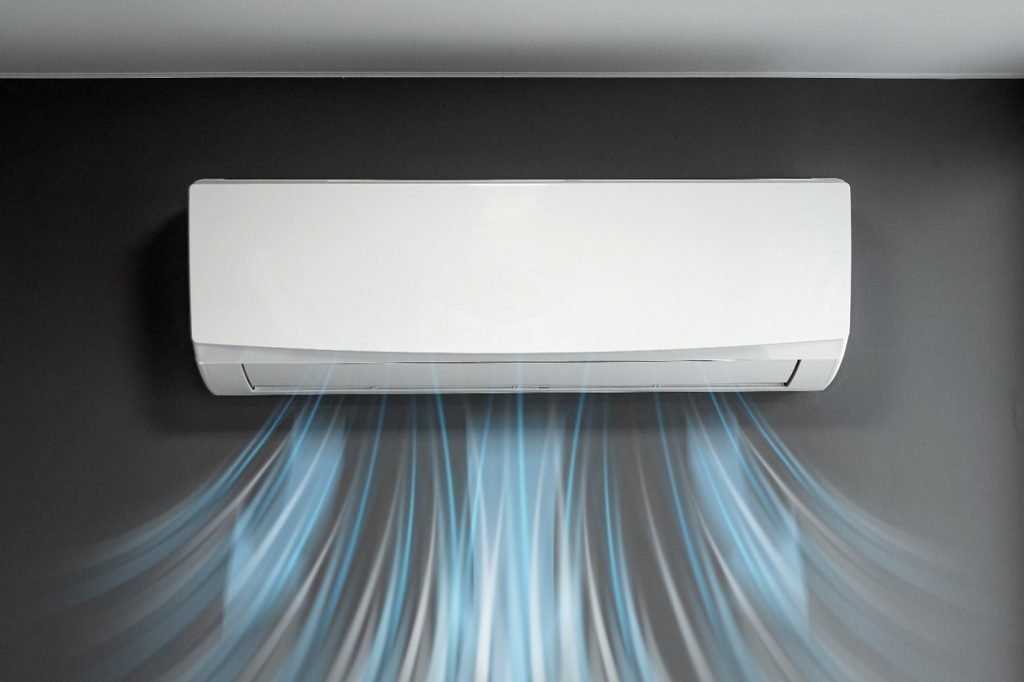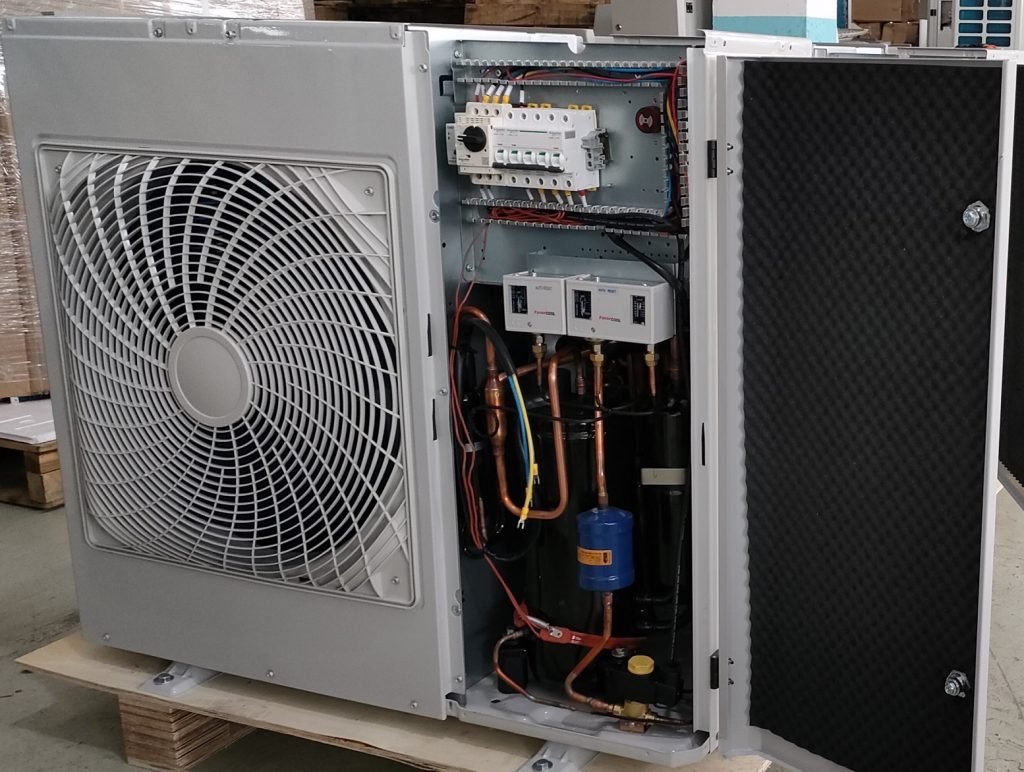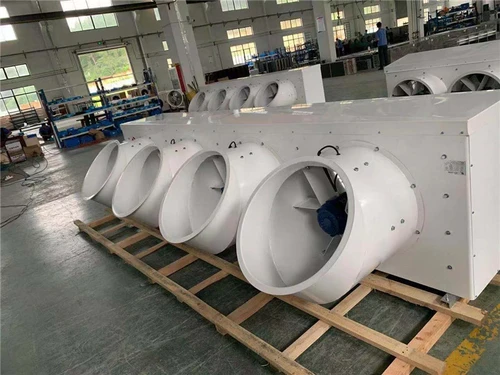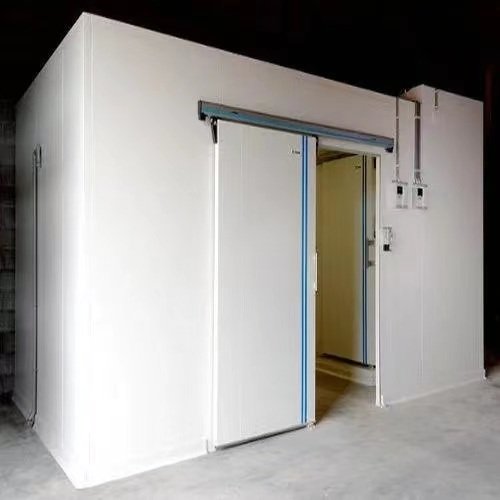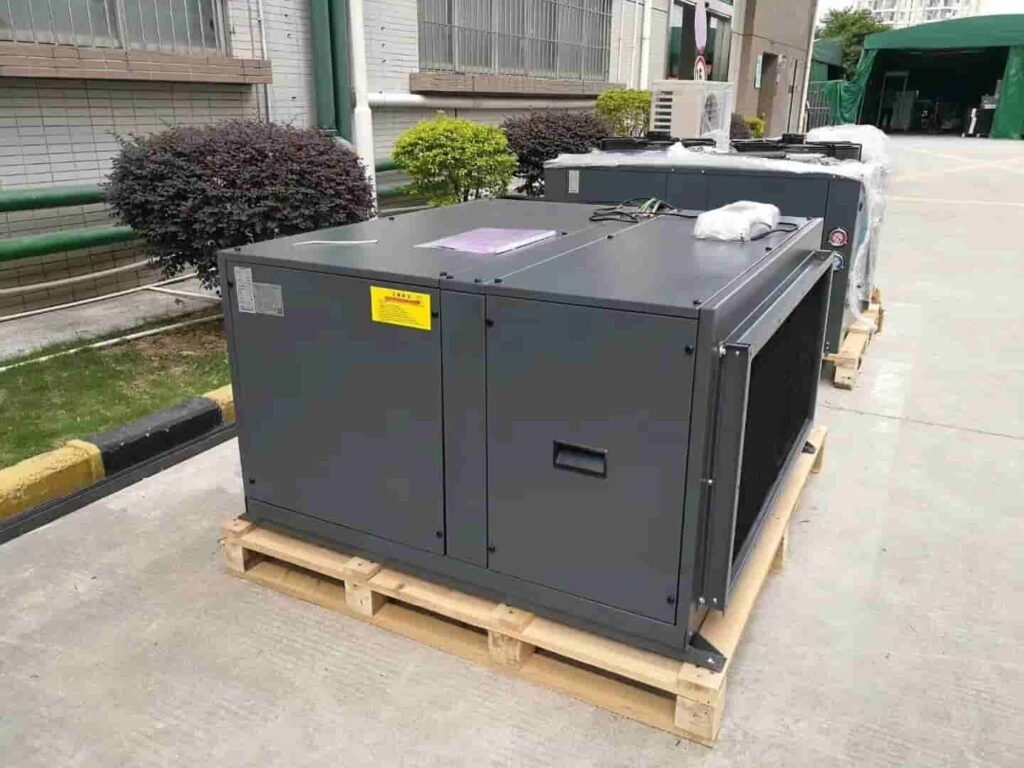Aluminum fin heat exchangers are critical components in industries such as HVAC, automotive, and industrial processes, where efficient heat transfer is essential.
These heat exchangers consist of aluminum tubes and fins that facilitate the exchange of heat between two fluids. Aluminum is chosen for its lightweight nature, excellent thermal conductivity, and cost-effectiveness compared to materials like copper.
However, aluminum is susceptible to corrosion and degradation in harsh environments, which can compromise performance and long life. So making surface treatments for aluminum fins to address these challenges, enhancing durability, efficiency, and functionality.
This article explores the types, applications, manufacturing processes, benefits, and future trends of surface treatments for aluminum fin heat exchangers.
Why Surface Treatments Are Necessary
-
Corrosion Resistance: Aluminum can corrode when exposed to moisture, salt, or acidic environments, particularly in coastal or industrial settings. Surface treatments provide a protective barrier that prevents corrosion, extending the lifespan of the heat exchanger.
-
Enhanced Heat Transfer: Certain coatings improve surface properties, such as wettability, reducing fouling (buildup of dirt or debris) and improving heat transfer efficiency.
-
Durability: Treatments make fins more resistant to wear and environmental damage, reducing the need for frequent replacements.
-
Aesthetic and Functional Improvements: Some treatments enhance the appearance of the heat exchanger or improve its ability to bond with paints or adhesives, which is important for specific applications.
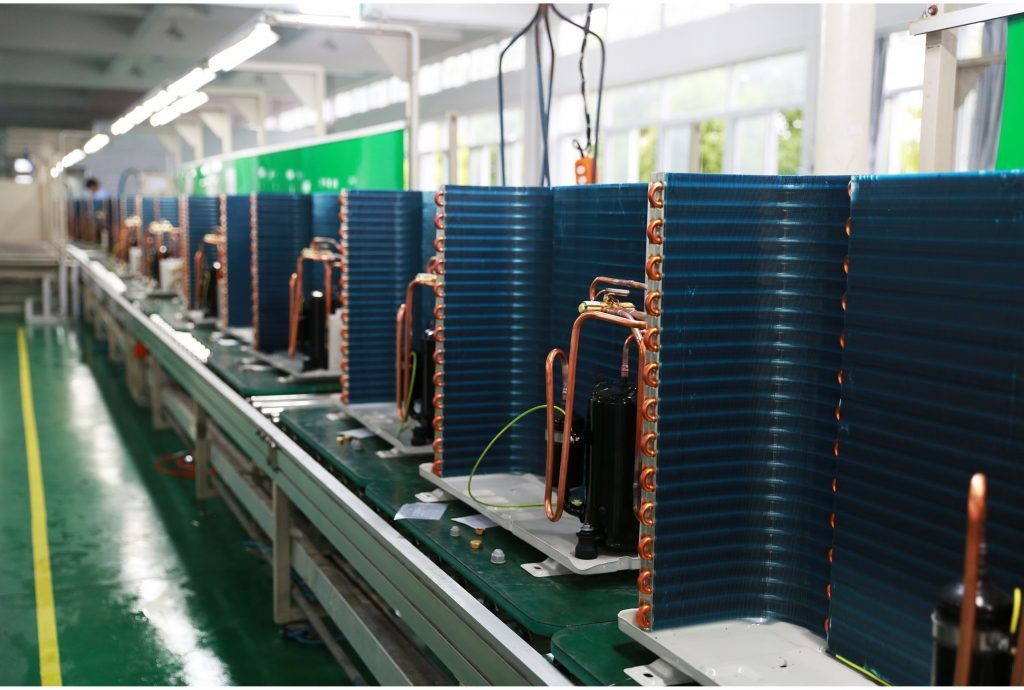
Types of Surface Treatments
-
Hydrophilic Coatings: These coatings make the surface water-attracting, improving water drainage and reducing water bridging between fins. This enhances heat transfer efficiency by preventing water accumulation, which can obstruct airflow. Hydrophilic coatings are particularly useful in HVACR systems where condensation is common.
-
Hydrophobic Coatings: These repel water, making them ideal for environments where moisture needs to be shed quickly to prevent corrosion or fouling. They are suitable for outdoor or humid conditions.
-
Corrosion-Resistant Coatings: These protect aluminum fins from corrosive environments, such as coastal areas with salt air or industrial settings with chemical exposure. Examples include epoxy, Heresite, and E-coatings.
-
Epoxy Coatings: Known for excellent adhesion and chemical resistance, normally used in industrial applications where heat exchangers are exposed to harsh chemicals.
-
Heresite Coatings: Specifically used for resistance to sulfuric acid and other corrosive substances, Heresite coatings are ideal for chemical processing industries.
-
Electrodeposition Coatings: These provide a uniform protective layer that enhances corrosion resistance and serves as a base for painting. They are commonly used in high-humidity environments like power plants and refineries.
-
Chemical Conversion Coatings: These, such as chromate or phosphate conversions, prepare the aluminum surface for further treatments by improving adhesion and providing initial corrosion protection.
-
Anodizing: Although not explicitly mentioned in all sources for heat exchangers, anodizing is a common aluminum treatment that increases corrosion resistance and hardness by forming a thick oxide layer. It is often used in applications requiring enhanced durability.
The following table summarizes the key surface treatments and their primary benefits:
|
Surface Treatment |
Primary Benefits |
Applications |
|---|---|---|
|
Hydrophilic Coatings |
Improves water drainage, enhances heat transfer |
HVACR systems, automotive air conditioning |
|
Hydrophobic Coatings |
Repels water, prevents corrosion |
Outdoor, humid environments |
|
Corrosion-Resistant Coatings |
Protects against moisture, salt, chemicals |
Coastal, industrial settings |
|
Epoxy Coatings |
High chemical resistance, durability |
Industrial, chemical processing |
|
Heresite Coatings |
Resists sulfuric acid, extreme corrosion |
Chemical plants, marine environments |
|
Electrodeposition-Coatings |
Corrosion resistance, paint adhesion |
Power plants, refineries, high-humidity areas |
|
Chemical Conversion Coatings |
Improves adhesion, initial corrosion protection |
Pre-treatment for painting or coating |
|
Anodizing |
Enhances corrosion resistance, hardness |
General industrial applications |
Specific Products and Applications
Several manufacturers offer pre-treated aluminum fin stock with special surface treatments tailored for heat exchangers:
-
Kobe Steel provides a range of pre-coated aluminum fin stock with specific function (Kobe Steel):
-
KS176: For indoor use, offering low odor and excellent fin formability, ideal for applications where aesthetics and ease of manufacturing are important.
-
KS655: Suitable for outdoor use, maintain high hydrophilicity to ensure efficient heat transfer in humid conditions.
-
KS101 and KS128: For outdoor applications requiring high corrosion resistance, particularly in salt-damage-prone areas like coastal regions.
-
-
Inquivix Technologies supplies aluminum fin stock with a variety of surface treatments, including hydrophilic, hydrophobic, epoxy-coated, Heresite-coated, E-coated, and chemical conversion coatings. These cater to applications ranging from HVAC systems to marine and chemical processing environments.
-
Super Radiator Coils offers aluminum fins with special coatings:
-
Heresite P413 Coating: Provides extreme corrosion resistance for coastal and marine environments, passing 1,000 hours of ASTM G85-A3 (SWAAT) testing and meeting ISO 12944-9 standards for 4,200 hours.
-
E-Coating: Ideal for high-humidity industrial settings like power plants and refineries, withstanding 3,000 hours of ASTM G85-A3 testing.
-
Manufacturing and Application Processes
-
Dipping or Immersion: Fins are submerged in a bath containing the coating material, ensure complete coverage.
-
Spraying: Coatings are applied using spray guns for even distribution, often used for large-scale production.
-
Electrochemical Processes: Used for treatments like anodizing or E-coating, where an electric current deposits the coating uniformly across the surface.
-
Multi-Layer Coatings: Some treatments, such as those from Kobe Steel, involve multiple layers to achieve specific properties (Kobe Steel).
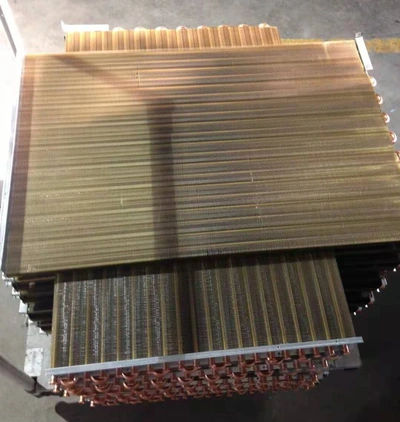
Performance Benefits
-
Improved Heat Transfer: Hydrophilic coatings prevent water bridging, allowing for better airflow and heat exchange, which is critical for applications like air conditioning.
-
Extended Service Life: Corrosion-resistant coatings protect aluminum from environmental degradation, reducing the need for frequent replacements.
-
Reduced Maintenance: Minimize fouling and corrosion, treated fins require less cleaning and upkeep, lower operational costs.
-
Compliance with Industry Standards: Treatments like Heresite P413 and E-coatings meet rigorous standards such as ASTM G85-A3 and ISO 12944-9, ensuring reliability in harsh conditions.
The following table highlights the performance benefits of specific treatments:
|
Surface Treatment |
Heat Transfer Improvement |
Corrosion Resistance |
Maintenance Reduction |
Standards Compliance |
|---|---|---|---|---|
|
Hydrophilic Coatings |
High (prevents water bridging) |
Moderate |
High |
N/A |
|
Hydrophobic Coatings |
Moderate |
High |
High |
N/A |
|
Heresite P413 |
High (<1% reduction) |
Very High |
High |
ASTM G85-A3, ISO 12944-9 |
|
E-Coating |
High (<1% reduction) |
Very High |
High |
ASTM G85-A3 |
Case Studies and Examples
While specific case studies are not always detailed in the sources, real-world applications can be inferred from product descriptions:
-
Coastal and Marine Environments: Heat exchangers with Heresite P413-coated fins are used in coastal regions to withstand the corrosive effects of salt air, ensure long life in marine applications.
-
Industrial High-Humidity Settings: E-coated aluminum fins are preferred in power plants and refineries, where high humidity and corrosive conditions are common, maintaining performance over extended periods.
-
Automotive Air Conditioning: Hydrophilic coatings on aluminum fins are used in automotive air conditioning systems to prevent water accumulation, ensure efficient cooling and optimal heat transfer.
Future Trends
-
Nanotechnology: Nano-coatings can offer superior durability, self-cleaning properties, and enhanced thermal performance, potentially revolutionizing heat exchanger efficiency.
-
Sustainable Materials: Eco-friendly coatings that reduce environmental impact while maintaining or improving performance are gaining traction, aligning with global sustainability goals.
-
Smart Coatings: Coatings that respond to environmental changes, such as self-healing coatings that repair minor damages automatically, are emerging as a future solution.
-
Integration with IoT: Heat exchangers with smart coatings that monitor and report on their condition could enable predictive maintenance, reducing downtime and costs.

Conclusion
Surface treatments are crucial for optimizing the performance and long life of aluminum fin heat exchangers. By selecting the appropriate treatment—whether hydrophilic, hydrophobic, corrosion-resistant, or special coatings like Heresite or E-coating—manufacturers can ensure their heat exchangers operate efficiently and reliably in diverse environments.
From improving heat transfer to extending service life and reducing maintenance, these treatments offer significant benefits. As technology advances, new coatings and application methods will further enhance the capabilities of aluminum fin heat exchangers, making them even more vital to industries worldwide.
Any comments?
Welcome leave a message or repost.
Key Citations



